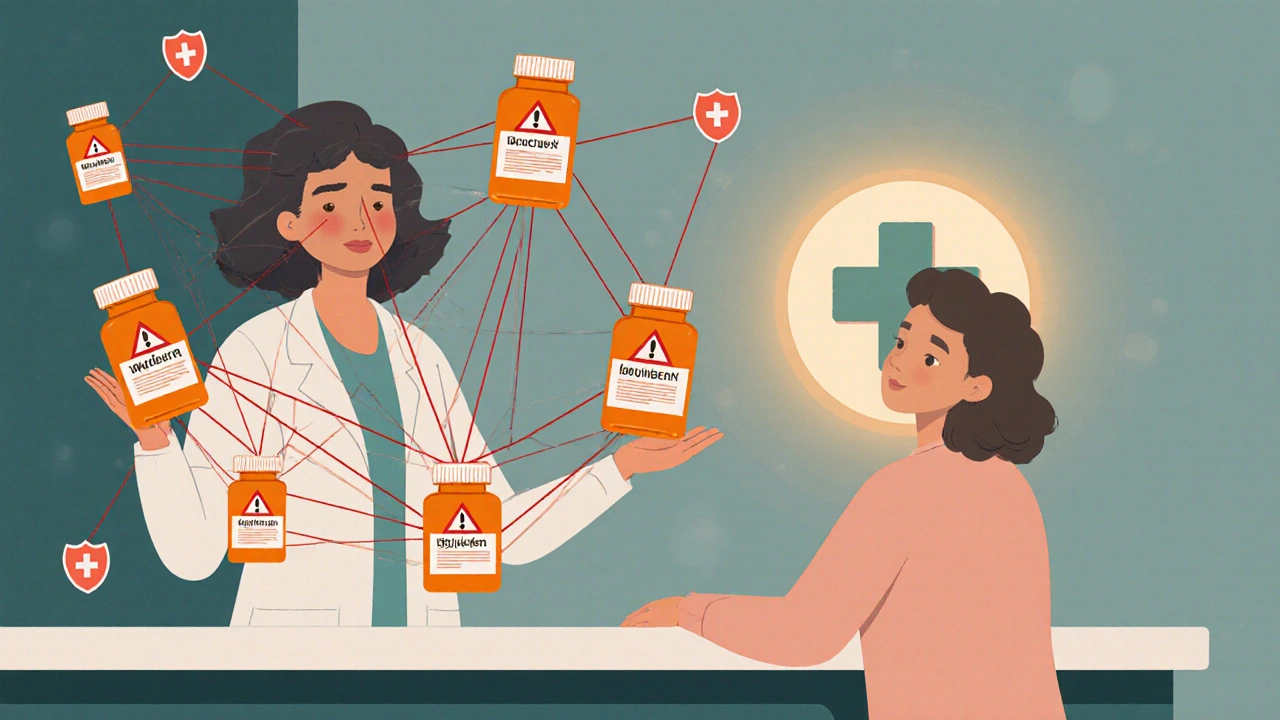Med Sync: How to Align Your Medications for Better Health
When you’re taking several medications, keeping track of when to take each one can feel like juggling knives. That’s where med sync, a system that aligns all your prescriptions to be refilled and taken on the same day each month. Also known as medication synchronization, it’s not just a convenience—it’s a proven way to cut missed doses, reduce hospital visits, and make your routine simpler. Most people on three or more daily meds end up with a cluttered pillbox, conflicting schedules, and anxiety about whether they took their blood pressure pill or their thyroid med. Med sync fixes that by grouping everything into one refill day—usually once a month.
This isn’t just for older adults. It works for anyone juggling prescriptions—whether it’s diabetes meds, antidepressants, blood thinners, or even OTC supplements. For example, if you take metformin for PCOS, a beta-blocker for high blood pressure, and magnesium for bone health, med sync ensures you don’t accidentally skip the magnesium because you’re focused on your morning pill routine. And since magnesium can block osteoporosis drugs like Fosamax if taken too close together, timing matters. Med sync helps you build in safe gaps between conflicting meds, reducing dangerous interactions before they happen.
It also ties directly into medication logs, a simple tool to track what you take, when, and how you feel. When your meds are synced, your log becomes clearer—you’re not chasing down 12 different refill dates. You just check one day a month. And if you’ve switched from brand to generic, like with warfarin or thyroid meds, med sync gives you a consistent rhythm to spot changes in how you feel or how your labs look. Even better, it pairs well with digital tools that remind you when to pick up your pills or warn you about new interactions—like those emerging digital therapeutics, FDA-cleared apps and devices that help you stick to your treatment plan. These tools don’t replace your meds, but they help you use them right.
Pharmacies now offer med sync as a standard service. You don’t need a special prescription—just ask. Many will even deliver your synced pills to your door. But it’s not magic. It only works if you stick to the schedule. If you skip a refill day, the whole system breaks. That’s why tracking your refills and symptoms matters. It’s not about being perfect—it’s about being consistent.
Below, you’ll find real guides on how to manage your meds safely: how to track changes after a generic switch, how to avoid dangerous interactions like magnesium blocking osteoporosis drugs, how to use a pill log to prevent overdose, and how to travel with controlled substances without getting stopped at customs. These aren’t theory pieces—they’re what people actually use to stay healthy. Whether you’re managing five meds or just one, med sync gives you back control. And that’s worth more than any pill.

Using One Pharmacy for Safety: How Centralizing Prescriptions Reduces Drug Interactions
Using one pharmacy for all your prescriptions reduces dangerous drug interactions, prevents duplicate medications, and gives you consistent support from a pharmacist who knows your full health history. It’s a simple step with major safety benefits.
October 31 2025